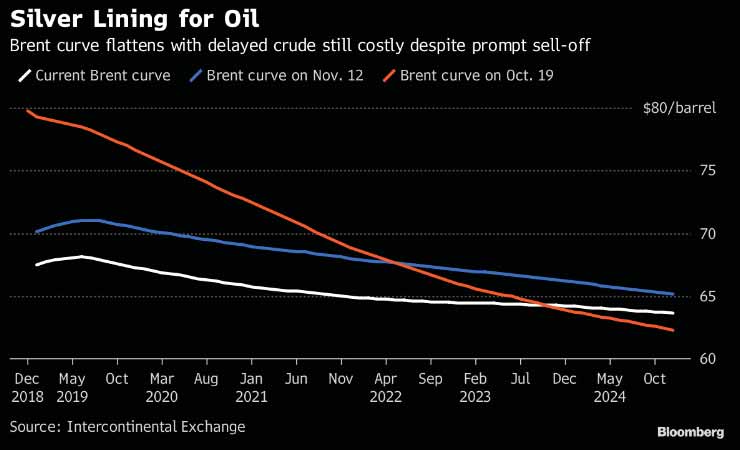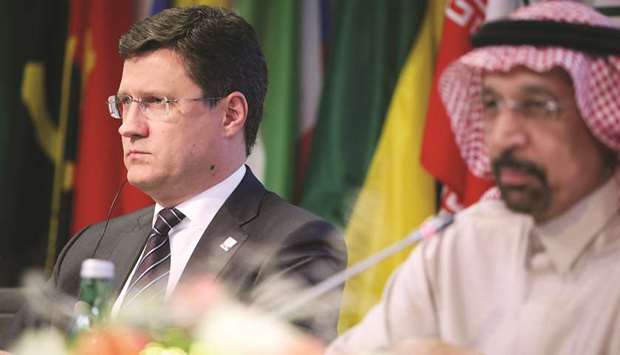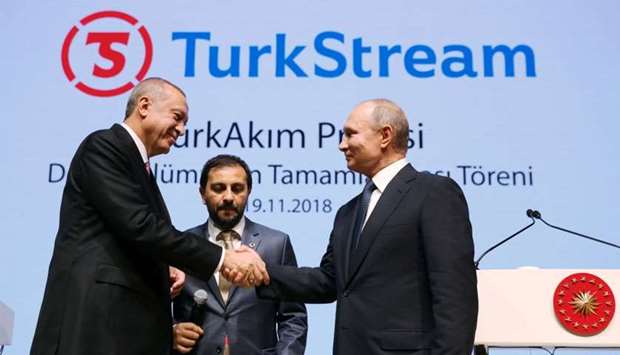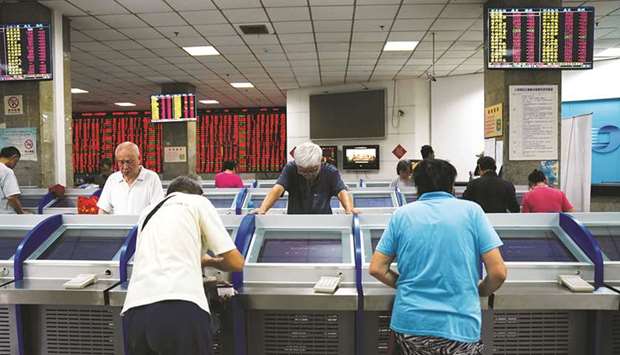US says economy to be hurt by climate change denied by Trump

The Trump administration just published a major report documenting the advance of climate change, weeks earlier than expected and on a day many Americans are occupied with family and holiday shopping. The news is predictably bad, but this time the tally comes with a price-tag — one significantly larger than you’ll find at the mall. The report catalogues the observed damage and accelerating financial losses projected from a climate now unmoored from a 12,000-year period of relative stability. The result is that much of what humans have built, and many of the things they are building now, are unsuited to the world as it exists. And as time goes on, the added cost of living in that world could total hundreds of billions of dollars — annually. “The assumption that current and future climate conditions will resemble the recent past is no longer valid,” the authors write. President Donald Trump has rejected without evidence the global scientific consensus that humans are doing grave damage to the planet. The Republican has sought to roll back Obama-era ini- tiatives to slow greenhouse gas pollution in favour of fossil fuel interests. In recent years, thousands of Americans have died during, or as a consequence of, extreme weather tied to climate change — from powerful hurricanes fuelled by extremely warm seas to calamitous conflagrations stemming from drought. “The Trump administration can’t bury the eff ects of climate change in a Black Friday news dump — ef- fects their own federal government scientists have uncovered,” said Senator Sheldon Whitehouse, a Democrat from Rhode Island, in a statement. “This report shows how climate change will aff ect every single one of our communities. The president says outrageous things like climate change is a hoax engineered by the Chinese and raking forests will prevent catastrophic wild fires, but serious conse- quences like collapsing coastal housing prices and trillions of dollars in stranded fossil fuel assets await us if we don’t act.” Part of the fourth US National Climate Assessment since 2000 (the last one was in 2014), the report departs from predecessors in that it focuses on money, and how much of it America stands to lose to climate change. The costs assessed range from household expenses to the availability and pricing of food, energy and other goods people use in modern society. And it’s not just the eff ects at home. “The impacts of climate change, variability, and extreme events outside the US are aff ecting and are virtually certain to increasingly aff ect US trade and economy, including import and export prices and businesses with overseas operations and supply chains,” the authors write.
“Now it’s seen much more as a societal or economic issue than a narrow environmental one.” A chapter on how to avoid worst-case scenarios, called mitigation, looks at estimates of economic losses across the economy by sector, pinned to the end of the century. They suggest that policy, technological and behavioural changes that lead to significantly lower emissions can cut potential financial damage across many sectors roughly by half. Nevertheless, such a best case-scenario will still leave Americans in a country where they are paying tens of billions of dollar more annually to ad- dress the fallout of accelerating climate change. A scenario with dramatically less pollution could slash projected losses in 2090 by 48% ($75bn) a year in labour costs, 58% ($80bn) in heat-related deaths and 22% ($25bn) in coastal real estate, according to the report. When the first NCA came out in 2000, researchers were still thinking through how diff erent parts of the US might be vulnerable to natural and human- driven changes. Almost two decades later, the as- sessment incorporates a grim accounting of actual damages, which in turn allows firmer projections of what’s coming. “A lot has happened in 20 years,” said John Furlow, a contributing author and deputy director of Columbia University’s International Research Institute for Climate and Society. “Now it’s seen much more as a societal or economic issue than a narrow environmental one.” Climate change’s impacts, the report states, are presenting painful financial choices for every region of the country: In Pennsylvania, ageing bridges may not fare well against more extreme storms, and wa- ter and wastewater systems need almost $30bn in investment. In general, about 90% of the northeast is built on infrastructure poorly suited to adjust to rising seas.
“Projected future costs are estimated to continue along a steep upward trend relative to what is being experienced today,” the report states. More than 60% of big southeastern cities see heat- wave trends above the national average, and three of them, Birmingham, Alabama, New Orleans and Raleigh, NC, are exceeding the rest of the country across all major heat-wave measures. Anchored by California’s clean-tech economy, the Southwest is seeing much of the nation’s new energy investment. Legacy power technologies, such as water-cooled power plants, will continue to work for decades, however, and will be less eff ective as temperatures make cooling sources too hot. Hot water could reduce eff iciency of these power plants by 15% by 2050. In the Midwest, a major producer of corn and soy- beans, increased temperatures, rainfall and humid- ity have eroded soil and allowed harmful pests and pathogens to thrive, according to the report. Rising growing-season temperatures in the region are pro- jected to be the largest single factor contributing to declines of US agriculture production. A new chapter of the NCA addressing US interests abroad emerged from the previous report’s work on agriculture. The sector directly contributed $136.7bn and 2.6mn jobs to the US economy in 2015. It’s also a significant source of pollution — about 9% of the US total in 2016 — and vulnerable to its impacts both at home and from abroad. “The US food system is a globalised food system, and we import a lot,” said Diana Liverman, a Re- gents’ professor at the University of Arizona. Since the global nature of food-system risk drew interest during the 2014 report discussions, researchers conducted deeper analysis “on things like the vulnerability of US supply chains.” Strange phenomena are playing havoc with the US food supply, including “the loss of synchrony of seasonal phenomena,” the report states, including an emerging disconnect between crops and pol- linators. While scientists are developing climate change resistant crops, the progress has been “modest,” according to the NCA. It calls for more public investment in these projects and notes that — against the claims of some environmental groups — “genetically engineered crops have shown economic benefits for producers, with no substantial evidence of animal or human health or environmental impacts.” The NCA diff ers in important ways from similarly weighty, periodic reports from the UN’s Intergovern- mental Panel on Climate Change. The most recent of these studies explored the diff erence between a world that warms 1.5 degrees Celsius and 2 degrees, the long-time international goal (slower sea-level rise, more Arctic sea ice, some coral left). The NCA authors express concern about growing threats to global trade, supply chains and the price of goods. Other international issues addressed beyond trade include national security, humanitar- ian aid and what the report calls “trans-boundary resources,” such as fish, water and minerals man- aged jointly by neighbouring countries.









